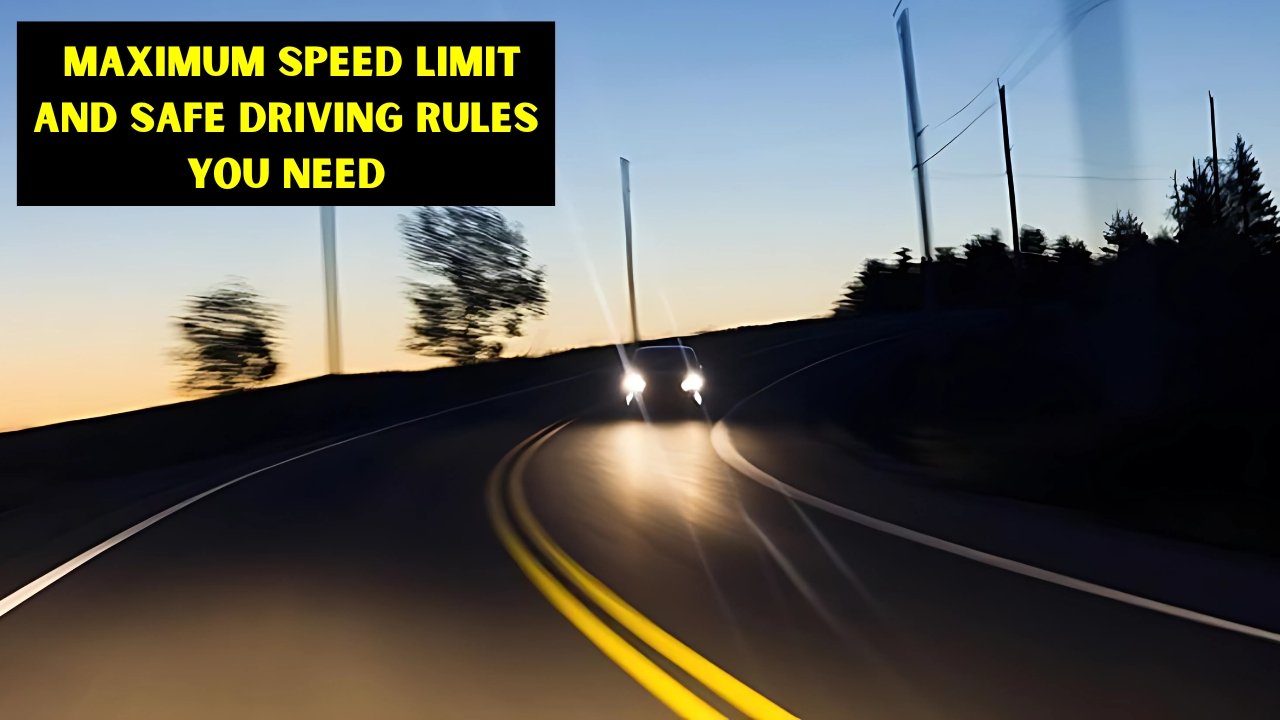Australia has a wide range of speed limits, depending on the particular state and territory, due to the various road and local policy differences. As a rule, the max speed limit in most areas of Australia is 110 km/h, but the Northern Territory is an exception as the limit is as high as 130 km/h on some of the highways. This paper examines the major variations in speed limits in Australia providing a clear picture of the same and some useful tips to drivers.
Speed Limits Data Table
| Location | Maximum Speed Limit (km/h) |
|---|---|
| Australian Capital Territory (ACT) | 100 |
| Northern Territory (NT) | 130 |
| New South Wales (NSW) | 100 (rural) |
| Queensland | 100 (rural) |
| Victoria | 100 (rural) |
| Western Australia (WA) | 110 (rural) |
| South Australia (SA) | 100 (rural) |
| Tasmania | 100 (rural) |
| Lord Howe Island | 25 |
| Norfolk Island, Cocos Keeling Islands | 50 |
| Christmas Island | 90 |
Speed limits by State and territory.
The speed limits in Australia are set by the individual states or territories as opposed to being set on a national level. Australian capital territory (ACT) has a maximum 100km/h limit along major roads which are well maintained and highly organized. However, the Northern Territory (NT) permits motorists to travel up to 130km/h on selected highways, including the Stuart, Arnhem, Barkly and Victoria highways. In the NT, there was a trial of free speed limits but they were back to 130 km/h due to political change, yet no deaths had been reported.
Urban and Rural Variations
In cities the speed limit in most Australian states and territories is 50 km/h, although in the NT it may be a bit more, 60 km/h. In case of rural areas, New South Wales, Queensland, Victoria, South Australia, and Tasmania usually establish the speed limit at 100 km/h. Rural roads in Western Australia and the NT typically permit 110km/h, as road conditions and the geography of the area dictate.
Enforcement and Road Safety
Strict cameras, radar and police surveillance ensure speed limits are strictly adhered to in all states and territories. Drivers that are caught over speeding are fined and they are given demerit points that underscore the importance of adhering to the posted limits. In other locations, speed signage may be dynamically altered so pedestrians are encouraged to exercise care and look at these signs frequently.
Australian Offshore Territories Special Cases.
A number of Australian offshore territories have significantly reduced speed limits because their road networks are smaller. As an example, Lord Howe Island has a 25km/h maximum speed, Norfolk Island and the Cocos Keeling Islands have a maximum of 50km/h, and Christmas Island has 90km/h. These thresholds are developed with the special conditions and safety issues of these isolated places in mind.
Useful tips on how to be a better driver.
Since the speed limits vary in Australia, the common tips that drivers should consider are to observe carefully the local speed limit signs and where they are not certain, ask the local authorities or the police. Some knowledge of changing speed limit and compliance is essential not simply to enhance safety but also to evade expensive fines.
Frequently Asked Questions
Q1: What is the maximum speed limit in Australia?
In Australia, the top speed limit is 130 km/h that is located in certain regions of the Northern Territory.
Q2: Do speed limits differ in Australia?
No, the speed limit is different in different states and cities, with rural and urban areas having different limits.
Q3: What is the enforcement of speed limit in Australia?
Speed limits are imposed using speed cameras, radar and police patrols and offenders are fined and awarded demarcations.
This presentation shows why local speed limits should be respected when driving in Australia to keep the roads safe and legal. The difference in limits indicates the different conditions in the roads and policies adopted to optimize safety and smooth traveling. It is important that all drivers in the country keep up with signage.


